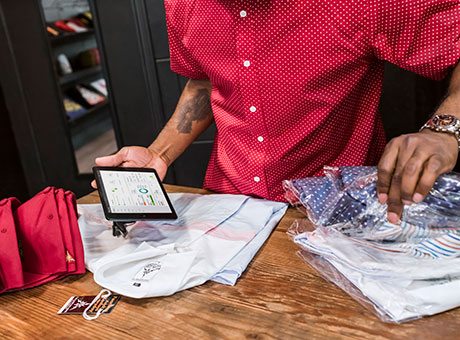It’s hard to have a successful nonprofit event without a strong backing from sponsors. You can make more money and have stronger community engagement if local companies donate to your cause, so think about these items as you plan for your nonprofit event.

Raising Money Through Corporate Sponsors of Your Nonprofit Events
How to Identify Potential Sponsors
Finding corporate sponsors is hard. It’s even harder if you cold-call potential sponsors who’ve never heard of your organization. Start thinking of potential sponsors by identifying connections within your nonprofit. Talk to your staff and volunteers to see which local businesses they have relationships with. Take a look at who is following your social media pages. If you can’t come up with potential sponsors, think about companies that support your cause. For example, if your nonprofit supports an after-school reading program, reach out to your local library, library foundation, or public school system.
How to Set Sponsorship Levels
Your chances of getting a corporate sponsor improve if you have multiple sponsorship levels with different perks for each. If your sponsor gives you more money, they get more perks. Include customized sponsorship packets. When you talk to potential sponsors, let them know you’re flexible about what they get in return. If all the items offered at a sponsorship level don’t interest your sponsor, change them.
Give Your Sponsor Value
Your sponsor may care deeply about your cause, but they also want something in return. Come up with ways to give sponsors value and make contributing to your organization worthwhile. Print corporate sponsor company logos within your event program. List corporate sponsors on your website, and publicly thank them on social media and in-person during the event. At the event, give your top sponsors the best tables or perks such as extra raffle tickets.
Make The Sponsorship Official
When you have verbal commitments from your sponsors, you want to make life as easy as possible for them. Create a commitment form to make sure you don’t lose sponsors, and get as much contact information as possible in case you need to reach out to them. It’s also crucial to explain acceptable payment methods. If your sponsor wants to write a check, list your mailing address on the form. If they want to pay by credit card, have a section they can write in to give you their information.
How to Price Your Sponsorship Levels
You can always scare away sponsors with your sponsorship level pricing. To make sure you’re not going overboard on pricing, think about your fundraising goals. What percent do you hope to raise by sponsorships , and how much income should come from specific donors? In general, your top sponsorship level should be 30% to 40% of your overall sponsorship goal. If you hope to raise $100,000 and want half of your income to come from sponsors, you need to raise $50,000 in sponsorships. Set your top sponsor level between $15,000 and $20,000, and create lower-level sponsorships that don’t have as many benefits.
Securing sponsorships for your event is vital. Consider who you want to approach, what benefits to offer your sponsors, and what your sponsorship levels might look like. If you can make a plan and secure sponsorships, your nonprofit event is off to a great start.


